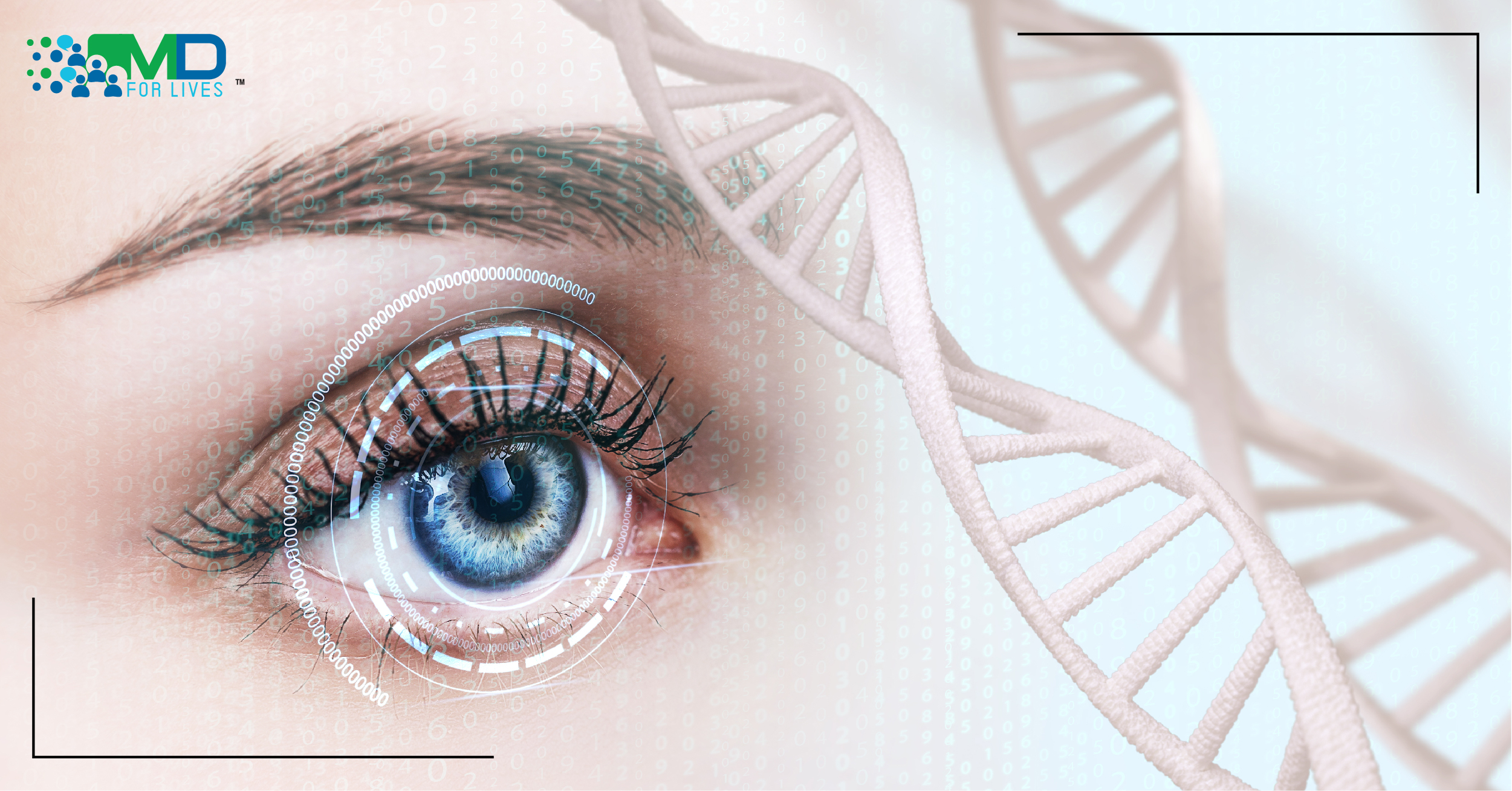Gene therapies for blindness have recently been in the news. There has been much interest in the potential for gene therapy to cure blindness resulting from inherited conditions, and several products are in clinical trials. In 2017, Luxturna, gene therapy for blindness caused by inherited retinal dystrophy, became the first hereditary disease-targeted gene therapy to win FDA approval. Now, researchers have published results from two gene therapy clinical trials for a hereditary neuropathy that robs adults of their sight.

Gene Therapy Clinical Trials for a Hereditary Neuropathy
Leber hereditary optic neuropathy (LHON) is a disease that causes loss of central vision with onset in adolescence or adulthood. It often strikes males during the teen years or in young adulthood, and it is responsible for an estimated 800 to 1200 new cases of blindness in the US and EU yearly. The disorder is caused by mitochondrial mutations that disrupt the function of optic nerve cells, causing a sudden loss of central vision in one eye. The vision loss typically progresses to the other eye within just a few months to one year.

mitochondrial mutations that affect the optic nerve.
Data from the REVERSE and RESCUE Phase III trials of an investigational therapy called GS010 (lenadogene nolparvovec) were reported in December 2020 and January 2021. GS010 targets a mutation in the mitochondrial gene MT-ND4; this mutation is responsible for the disease in about 75% of patients. The company GenSight Biologics, based in Paris, is behind the therapy.
Gene therapy involves the insertion of genetic material into a patient’s body with the goal of modifying the function of a specific group of cells or an organ. Most commonly, the goal is to replace the patient’s defective, disease-causing gene with a normal gene. Other gene therapy strategies include inactivating a mutated gene that causes disease or introducing a new gene that helps overcome a disease. The therapeutic genetic material is delivered using a vector, or delivery vehicle, which is often based on a modified virus.
GenSight Biologics’ potential gene therapy for blindness
In the Phase III REVERSE trial, 37 patients with LHON and an MT-ND4 mutation were treated with GenSight Biologics’ therapy GS010 for six to twelve months after the onset of vision loss. Each patient was given the gene therapy in one eye via intravitreal injection and sham treatment in the other, serving as a control. A majority of patients saw improvements in visual acuity in the treated eye, although they did not recover their original level of function.
The plot thickened when the researchers observed that many REVERSE trial patients unexpectedly had an improvement in vision in the untreated eye as well. The findings made it all the more difficult to analyze the therapeutic success because of the narrower difference between treated and control eyes. Still, the researchers reported that a significant proportion of the treated eyes showed clinically relevant improvement in visual acuity compared with the sham-treated eyes.

(delivery vehicle) for GS010. Source: Wikipedia
The most recent data, published in Science Translational Medicine on December 9, 2020, suggest one possible explanation. The researchers report that when monkeys were treated with GS010 in one eye, DNA from the viral vector was found in the untreated eye and the optic nerve three months later, implicating that the therapeutic DNA is transferred to the untreated eye and led to an improvement in vision. However, the researchers caution that other explanations, like a neural reorganization or local inflammation, could be behind the improvement in the untreated eye.
Results from the Phase III RESCUE trial of GS010 published in Ophthalmology on January 12, 2021. A total of 39 patients participated in the trial. The trial focused on treating patients with LHON within the first six months after the onset of vision loss. The researchers reported that 71% of participants had clinically relevant improvement in visual acuity in at least one eye and statistically significant improvements in visual acuity observed in both treated and sham-treated eyes.

GenSight’s GS010 is not the only gene therapy for blindness in the pipeline today. Editas Medicine is working on a CRISPR-based treatment for Leber congenital amaurosis. Other gene therapies currently in trials for hereditary eye diseases include a potential treatment for achromatopsia (a form of complete color blindness), and gene therapy for X-linked retinitis pigmentosa, both developed by MeiraGTx.







2 Comments
Charcot Marie Tooth disease therapy: Phase III trial has begun
5 years ago[…] motor sensory neuropathy (HMSN). Patients can carry duplications, mutations, or other changes in genes that lead to abnormalities in nerve axons, problems with myelination, or both. Peripheral nerves […]
Phase III trial beginning for a Charcot-Marie-Tooth disease therapy - MDForLives
4 years ago[…] motor sensory neuropathy (HMSN). Patients can carry duplications, mutations, or other changes in genes that lead to abnormalities in nerve axons, problems with myelination, or both. Peripheral nerves […]